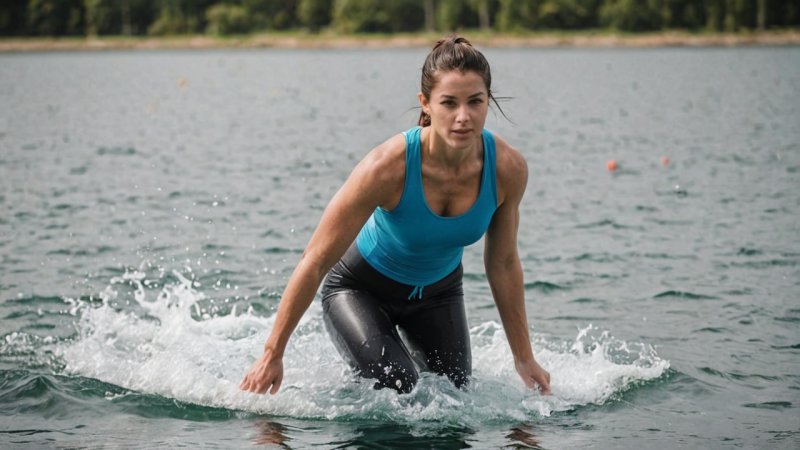Water sports offer a unique combination of exhilaration and challenge, requiring athletes to harness the power of their bodies while navigating the dynamic environment of lakes, rivers, and oceans. Whether it’s surfing, kayaking, wakeboarding, or swimming, each discipline demands a specific set of physical attributes and skills. Training effectively for these sports not only enhances performance but also significantly reduces the risk of injury. Understanding the key components of training for water sports is essential for any athlete looking to excel while maintaining safety and efficiency.
Understanding the Physical Demands
Water sports are often characterized by their requirement for strength, endurance, flexibility, and balance. Each sport, while distinct in execution, shares common physical demands that athletes must address in their training. For instance, paddling in kayaking requires upper body strength and core stability, while surfing necessitates strong leg muscles and agility to maneuver on the board. Recognizing these demands is the first step towards creating a tailored training program.
Building Core Strength
The core muscles play a crucial role in almost every water sport, serving as the body's center of power and stability. A strong core supports balance and coordination, essential for activities like paddleboarding or wakeboarding. To build core strength, athletes can incorporate exercises such as:
- Planks: Challenge your core stability by holding a plank position for extended periods.
- Russian Twists: Engage your obliques and improve rotational strength, crucial for paddling and maneuvering.
- Medicine Ball Throws: Combine strength and coordination with explosive medicine ball exercises.
Enhancing Cardiovascular Endurance
Water sports often require prolonged physical exertion, making cardiovascular endurance a vital aspect of training. Engaging in aerobic exercises can help improve stamina. Some effective cardiovascular workouts include:
- Swimming: An obvious choice, swimming laps can enhance both cardiovascular fitness and specific muscle endurance.
- Cycling: This low-impact exercise builds leg strength and improves cardiovascular health, complementing water sports training.
- Running: Incorporating running into your routine enhances overall endurance and leg strength, which is beneficial for most water sports.
Improving Flexibility and Mobility
Flexibility is often overlooked in training regimes but is essential for optimal performance in water sports. Improved flexibility allows for better movement patterns and can reduce the risk of injuries. Incorporating dynamic stretching and yoga into your routine can be beneficial. Recommended practices include:
- Dynamic Stretching: Focus on movements that mimic the actions of your sport, such as arm circles for kayaking or leg swings for surfing.
- Yoga: Regular yoga sessions enhance flexibility, balance, and mental focus, all of which are crucial for water sports.
Incorporating Strength Training
Strength training should not be neglected in preparation for water sports. Building overall strength, particularly in the upper body and legs, will improve your ability to perform well in your chosen activity. Key exercises include:
- Deadlifts: A compound movement that builds strength in the legs, back, and core.
- Pull-Ups: Excellent for developing upper body strength, essential for paddling and climbing onto a surfboard.
- Squats: Strengthening the legs will aid in balance and power when maneuvering on water.
Practicing Sport-Specific Skills
While general conditioning is important, practicing the specific skills of your chosen water sport is crucial for success. Schedule time for skill development, whether it’s working on your strokes in swimming, practicing your balance on a wakeboard, or learning to carve on a surfboard. Regularly engaging in your sport will help you apply the strength, endurance, and flexibility you've developed in training.
Prioritizing Safety and Recovery
Safety is paramount in water sports, and understanding how to recover properly will enhance your performance while preventing injuries. Implement recovery strategies such as:
- Hydration: Always stay well-hydrated before, during, and after your training sessions.
- Rest Days: Allow your body time to recover to avoid overtraining and fatigue.
- Listening to Your Body: Pay attention to any signs of strain or injury, and adjust your training accordingly.
Conclusion
Training for water sports is a multifaceted endeavor that requires a balanced approach focusing on strength, endurance, flexibility, and skill development. By understanding the physical demands of your chosen sport and implementing a comprehensive training program, you can enhance your performance while ensuring your safety in the water. Remember, consistency in training, along with a focus on safety and recovery, will lead to long-term success and enjoyment in your water sports pursuits.






